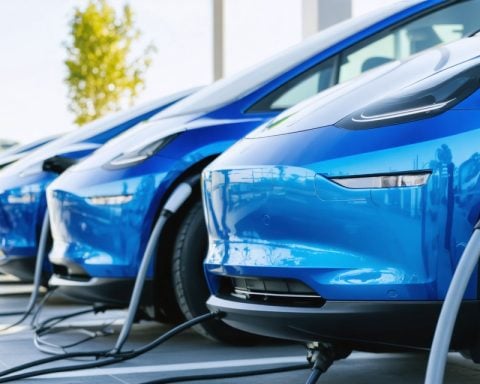- EV batteries perform optimally within a temperature range of 68°F to 86°F; deviations reduce efficiency and driving range.
- Cold climates hinder chemical reactions in batteries, shortening driving range, while hot conditions accelerate energy loss and risk overheating.
- Battery preconditioning systems are innovative solutions that prepare batteries for optimal performance regardless of external temperatures.
- Routine maintenance, including inspecting coolant levels and addressing leaks, is essential for battery health and longevity.
- Summer heat requires robust cooling systems and vigilant inspections to prevent damage and maintain battery integrity.
- Built-in battery health monitors provide crucial information, assisting owners in proactive maintenance and performance preservation.
- Understanding and addressing climate impacts is key to maximizing EV lifespan and efficiency.
In the world of electric vehicles (EVs), batteries face the relentless challenge of temperature. Picture this: a battery losing its life’s vigor, struggling to keep up against winter’s frosty breath or summer’s blazing heat. These extremes push the limits of lithium-ion technology, dictating the very essence of driving range and efficiency.
Our trusty EV batteries function best in a climate Goldilocks would love—not too hot, not too cold, ideally between 68°F and 86°F. Steer away from this sweet spot, and you witness a performance plunge. On icy roads, chemical reactions seize up, leaving your drive drastically shortened. In steamy conditions, batteries sweat excessively, their energy fading too fast while warding off thermal catastrophe.
Yet, innovation marches on. Technology offers solace with battery preconditioning systems that coax batteries into their comfort zone, ensuring peak performance before the car touches asphalt. Maintenance becomes a ritual: technicians routinely inspect coolant levels, repairing leaks and checking for signs of distress just beneath the surface.
Summer demands its own defenses. Cooling systems toil tirelessly, and vigilant inspections guard against threats from heat wear—physical damage, leaks, voltage anomalies—the enemies recessed in a vehicle’s hidden veins.
As the battle with climate continues, EV owners wield powerful tools. Built-in battery health monitors offer insights into the heart of the vehicle. The crucial state of health metric warns when it’s time for intervention before performance wanes.
The takeaway? Master your vehicle’s needs for a smoother ride across climates. Lifespan and efficiency hinge on forethought, transforming seasonal battles into strategic victories on the road.
Revolutionizing EV Battery Performance: Stay Ahead of Extreme Temperatures with These Tips
How-To Steps & Life Hacks for EV Battery Care
1. Precondition Your EV Battery:
– Winter: Before you set off on a cold morning, use your EV’s preconditioning feature to warm the battery and cabin. This ensures optimal battery performance and maximizes range.
– Summer: Pre-cool your car while it’s still plugged in to prevent the battery from depleting while cooling the interior on the go.
2. Regularly Check and Maintain Battery Health:
– Monitor coolant levels and check for leaks or physical damages.
– Use the vehicle’s built-in battery health monitor to track metrics and diagnose issues.
Real-World Use Cases of Battery Preconditioning
EV battery preconditioning can significantly enhance performance in extreme temperatures. For example, in colder climates, Tesla owners have reported improved range and efficiency by using the preconditioning feature through the mobile app before setting off.
Market Forecasts & Industry Trends
The global EV battery market is projected to grow significantly, driven by technological advancements, increased demand for electric vehicles, and policies favoring sustainable energy. According to a report by Allied Market Research, the market is expected to reach $84 billion by 2025.
Reviews & Comparisons
Experts often compare EVs based on their battery thermoregulation systems. Tesla, with its advanced thermal management system, is highly-regarded for maintaining battery efficiency and longevity in extreme climates.
Potential Controversies & Limitations
Despite technological advances, EV batteries remain susceptible to extreme temperatures. Critics point to inadequate infrastructure in developing regions that hinders the widespread adoption of EVs due to unreliable charging facilities and lack of maintenance support.
Features, Specs & Pricing
Modern EVs come equipped with sophisticated battery management systems (BMS) that include features like thermal shutdown protection, overcharge prevention, and fan-assisted cooling. Prices vary widely, from $30,000 for entry-level models like the Nissan Leaf to $100,000+ for luxury options like the Tesla Model S.
Security & Sustainability
EV batteries are safer and more sustainable options compared to traditional fuel. However, environmental impacts from mining lithium and rare earth elements remain a concern. Efforts are underway to develop greener battery alternatives, such as solid-state technologies.
Insights & Predictions
Experts predict that future advancements in solid-state batteries and improved BMS technologies could further mitigate the effects of temperature on EV batteries. These innovations may offer longer lifespans and faster charging times, ultimately making EVs a more viable option for all climates.
Tutorials & Compatibility
EV manufacturers often provide online tutorials [Tesla](https://www.tesla.com) and [Nissan](https://www.nissanusa.com) offer extensive resources for their vehicles.
Pros & Cons Overview
Pros:
– Enhanced vehicle longevity and driving range with proper temperature management.
– Reduced maintenance costs and long-term savings on fuel.
Cons:
– Initial costs can be high.
– Battery performance can still be affected by extremely high or low temperatures without proper management.
Actionable Recommendations
– Use Tech to Your Advantage: Familiarize yourself with your EV’s preconditioning technology and battery health monitor.
– Routine Checks: Regularly inspect coolant levels and follow manufacturer guidelines for maintenance to avoid costly repairs.
– Stay Informed: Keep abreast of new technological developments and industry trends to ensure your EV remains efficient and sustainable.
Visit [Tesla](https://www.tesla.com) or [Nissan](https://www.nissanusa.com) for more information on advanced battery management systems and vehicle options.
By taking proactive measures in managing your EV’s battery health, you’ll extend its life and ensure optimal performance throughout the year, regardless of the climate conditions.













